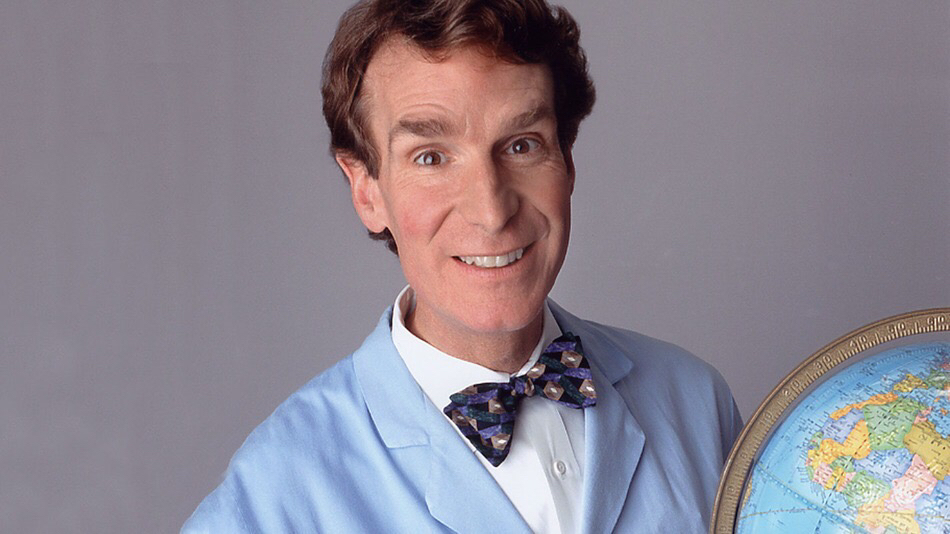Bill Nye returns to pop culture through his new show, Bill Nye Saves the World— a Netflix original series released on April 21. The show aims to introduce current scientific issues to the public in an accessible way.
Although he studied mechanical engineering, Nye is known for his appearances as a science communicator. Starting in 2003, he hosted an educational show, Bill Nye the Science Guy, which introduced countless students to basic, but abstract, scientific concepts—including waves and electromagnetism. His demonstrations of scientific experiments captivated his audience.
Despite Nye’s renowned prowess in delivering scientific knowledge, his new show disappoints. The series is politically assertive and sparsely scientific. Rather than presenting and explaining the existing evidence behind many of his shows’ topics, Nye tends to make assertions without backing them up or considering contradictory claims, necessities in properly-conducted science.
The show sticks to a specific formula. To start off an episode, Nye quickly introduces the selected topic. Then, a short documentary of field studies—featuring scientists and experts who discuss their field experience and knowledge of said topic—is presented. Finally, he interviews a panel of three carefully-chosen experts. His attempts at humor often sound forced. However, the audience always cheers, further exacerbating the awkward ambience from his forceful jokes.
In some episodes, he expresses his scientific and political stances. During the first episode, he implicitly blames President Donald Trump for the U.S.’s lack of action to limit climate change. Moreover, Nye says that climate change is real without presenting supporting facts, failing to address and debunk alternate opinions and theories.
The field-study documentary lasts too briefly to properly inform the audience of the issues at hand, even for a scientifically sound audience. The young reporters are knowledgeable and eager, yet Bill Nye acts silly and lighthearted. His immature fist bumps and awkward humor undermine the reporters’ professional attitudes during their field-studies debriefs. Unfortunately, this awkward tone persists throughout the series.
Furthermore, the recruited panel of experts seem to share Nye’s opinions in many episodes, resulting in a lack of diversity of thought. In the ninth episode, about sexuality and gender, the panel unanimously agrees that gender exists on a spectrum, a view that Nye supports. He criticises conservatives by labelling both himself and the members of his panels as “enlightened and forward-thinking.” Moreover, he spends only two minutes out of the episode’s 30 minutes describing the fundamental scientific data behind the gender spectrum, such as genetic determinism—the notion that genes control humans, although their surrounding environment can influence development as well.
In addition, he features actress Rachel Bloom, who performs her song “My Sex Junk” to support his viewpoint for gender spectrum–a notion that gender could be non-binary in between the two extremes of male and female. There are more than 50 different terms to choose from to decide one’s gender identity on Facebook.
Nye applauds Bloom’s dance performance, commenting “that’s exactly the right message." However, while watching the show I got confused with which part of the lyrics was “exactly the right message.” Nye decides to spend some valuable time of the show on featuring Bloom’s ribald performance rather than to explain the science of gender identity. He could’ve extracted some scientific literature about gender identity and present some data. However, Nye seems to be confused between the weight of scientific data and a song to support a scientific claim.
To illustrate “lots of flavors to sexuality,” Nye draws an ice cream analogy to despise the gender binary of male and female. The analogy shows a vanilla ice cream, which represents an acceptable gender, attempting to convert other flavored ice creams, which symbolize less prominent gender, into the vanilla-flavored one. His metaphorical argument is weak because, instead of describing science that illustrates gender spectrum, Nye chooses to assert its existence repeatedly as if the viewing audience is blind and naive.
However, the song and analogy lack scientific backing; they are assertions. Nye seems to rely on his veneer of “the science guy” from his previous show to present his opinions as irrefutable scientific facts. And yet, despite the lack of scientific evidence presented, he concludes the episode by saying “the science says we’re all on a spectrum.”
Watching the rest of the series, after finishing the first episode, did not turn out to be enlightening. The contents are too superficial. Reading two or three articles from Popular Science magazine about the individual topics would give a more holistic analysis of the issues addressed. Every scientist accepts that accurate science can withstand the test of time as we gather increasing amounts of data. However, Bill Nye, the “science guy,” demonstrates that science comes from reiterating statements. This disappointing and uninformative show could strip Nye of his eminent reputation as a science communicator from millennials.








